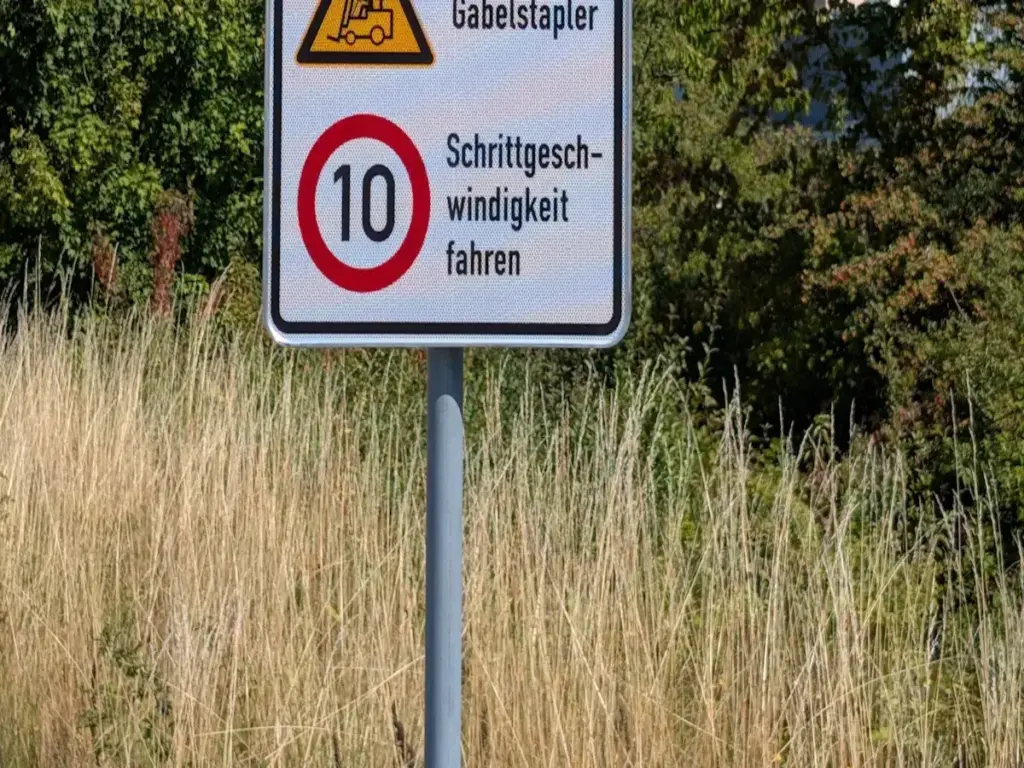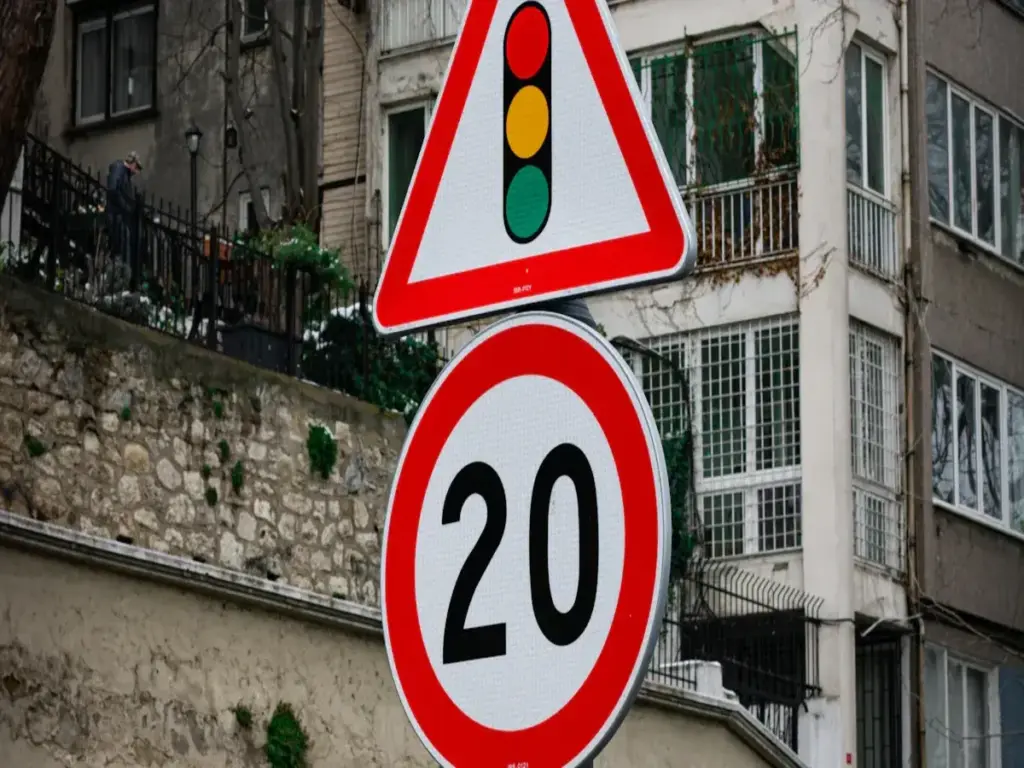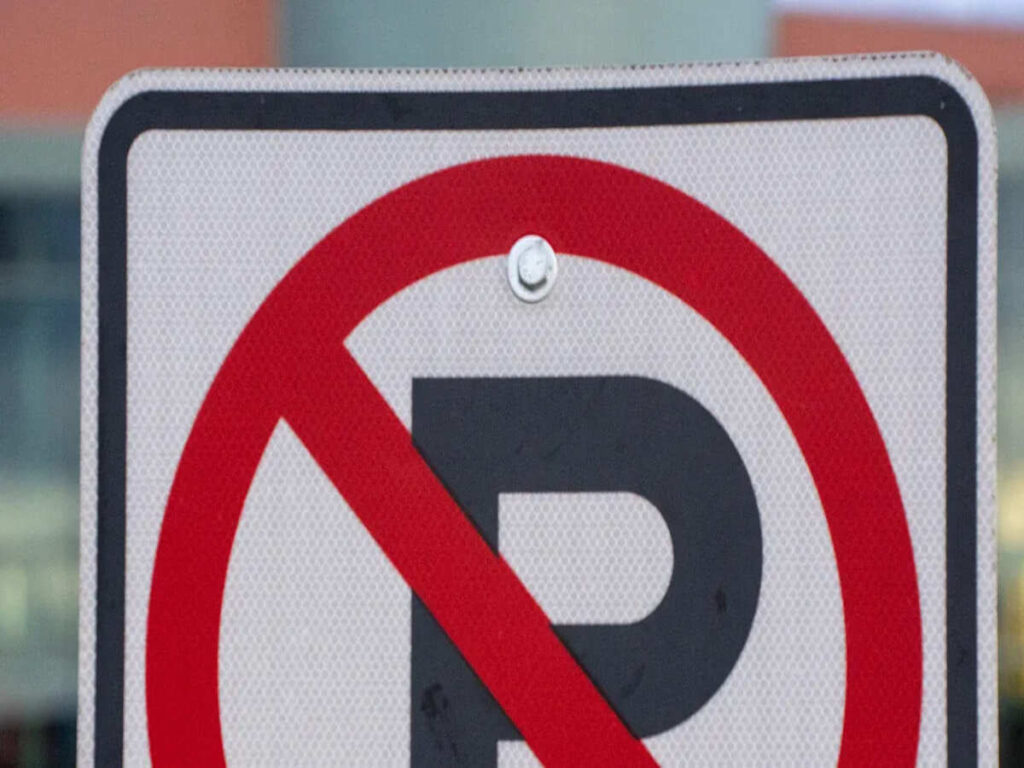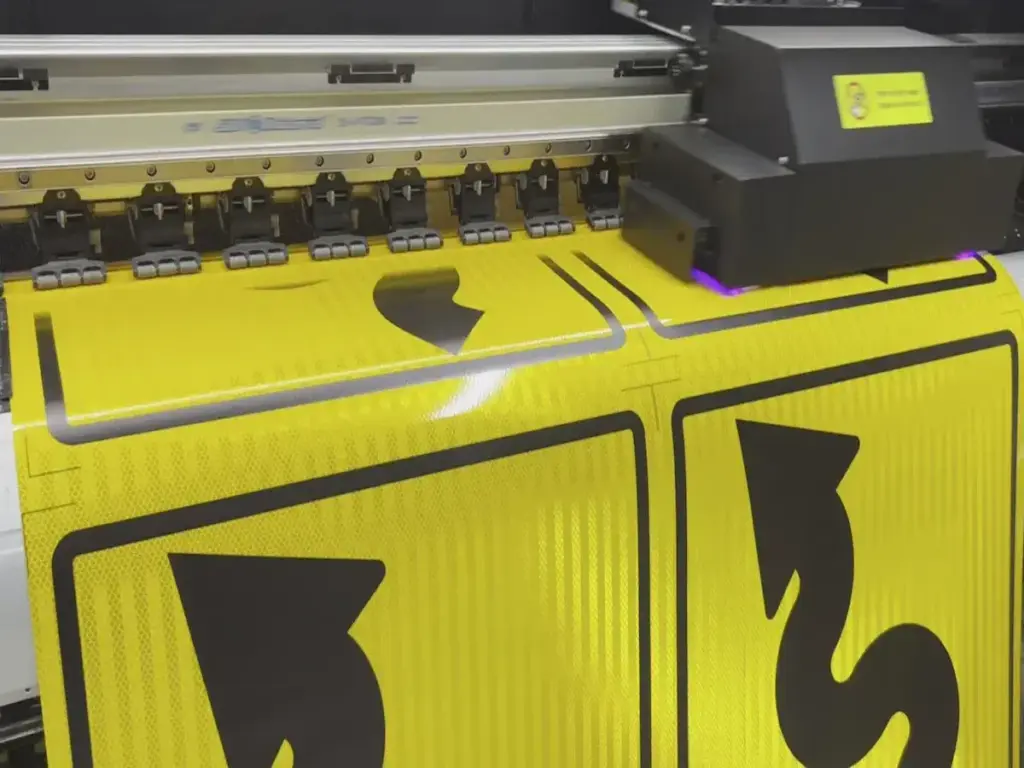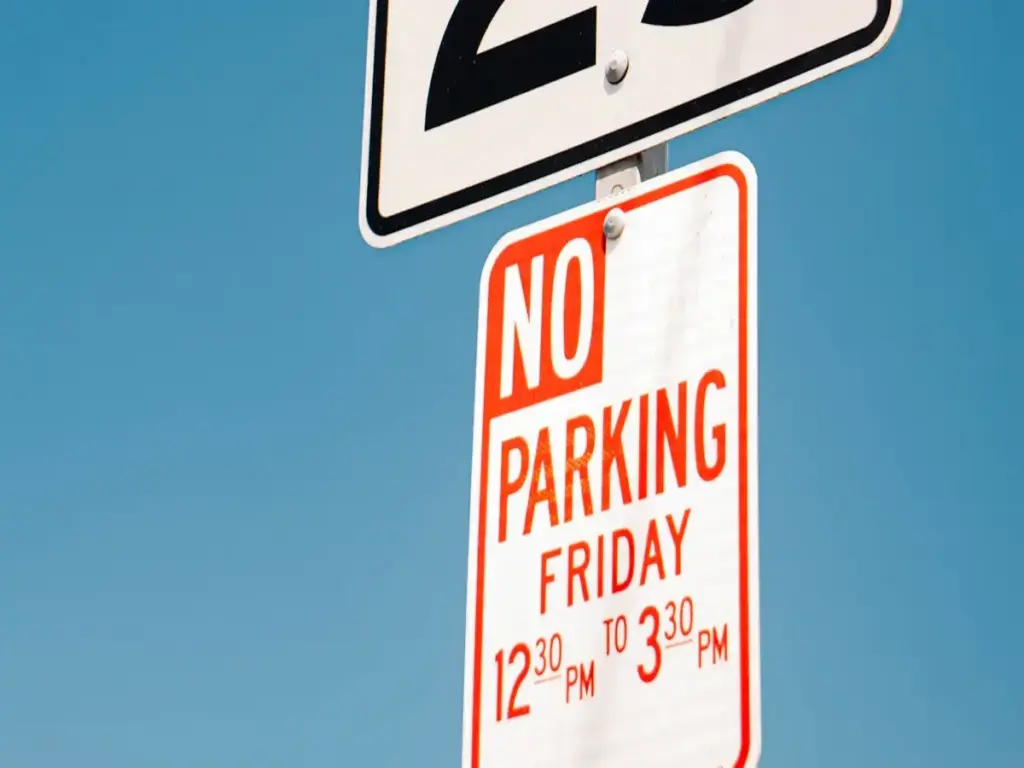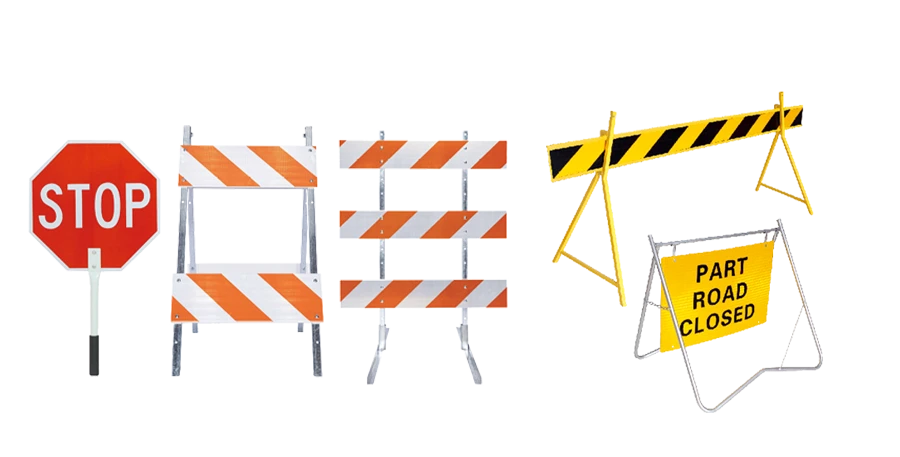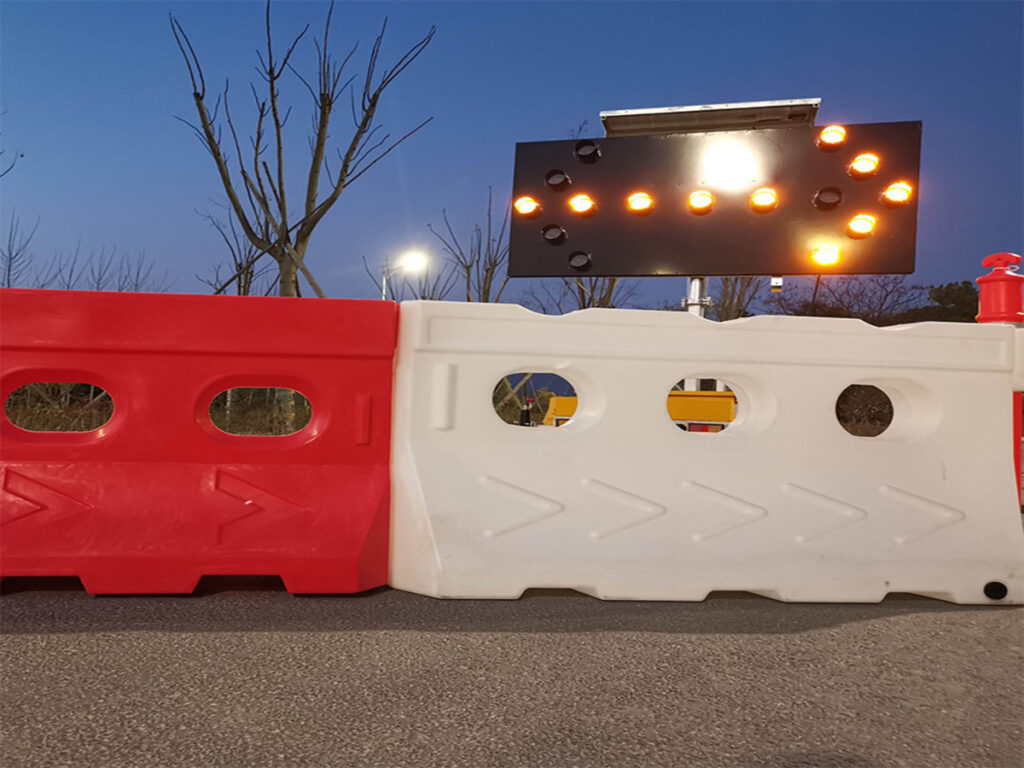
물로 채워진 장벽이 어떻게 도로 공사와 작업장을 더 안전하고 좋게 만드는가?? 지난 10년 동안, 업계가 많이 변했어요. 이제 사람들은 적응하고 오래 지속되는 안전 솔루션을 원합니다.. 기업들은 에너지를 절약하는 LED 조명을 사용합니다.. 그들은 또한 재활용 플라스틱과 스마트 기술을 사용합니다.. 이러한 것들은 사람들이 더 잘 볼 수 있도록 돕고 환경을 보호합니다.. 물로 채워진 장벽은 좋은 선택입니다. 이동이 쉽고 여러 상황에서 쉽게 볼 수 있습니다.. 이러한 새로운 아이디어는 사람들이 공공 안전과 현장 운영에 더 관심을 갖고 있음을 보여줍니다..
Optraffic 제안 물로 채워진 장벽 최대한의 안전성과 사용 편의성을 고려하여 설계됨. 우리의 장벽은 뛰어난 가시성을 제공합니다, 적응성, 환경적 이점, 건설 현장 및 도로 공사에 이상적입니다.. 귀하의 사이트가 더 안전한지 확인하기 위해 오늘 당사의 제품군을 살펴보십시오., 더 효율적, 그리고 친환경.
주요 테이크 아웃
- 물로 채워진 장벽은 비어 있을 때 가볍습니다.. 가득 채우면 무거워지는데. 이렇게 하면 쉽게 이동할 수 있습니다.. 사람을 보호할 만큼 강하기도 하고. 교통 통제에도 도움이 됩니다.
- 이러한 장벽은 충돌 충격을 흡수하여 장소를 더욱 안전하게 만듭니다.. 밝은 색상 덕분에 쉽게 알아볼 수 있습니다.. 반사 스트립도 있어요. 다양한 사이트에 맞게 쉽게 연결할 수 있습니다..
- 설정이 빠르기 때문에 시간과 비용이 절약됩니다.. 당신은 그것을 계속해서 사용할 수 있습니다. 넣거나 꺼내기 위해 무거운 기계가 필요하지 않습니다..
- 물로 채워진 장벽은 여러 장소에서 잘 작동합니다.. 도로공사에서 사용할 수 있습니다., 건설 현장, 이벤트, 그리고 비상 사태. 그들은 노동자를 유지하는 데 도움이, 드라이버, 보행자도 안전하고.
- 올바른 장벽을 선택하는 것이 중요합니다. 설치 및 유지 관리를 위한 올바른 단계를 따르면 오랫동안 모든 사람의 안전을 유지할 수 있습니다.. 또한 영국 규칙을 준수하는지 확인합니다..
물로 채워진 장벽 개요
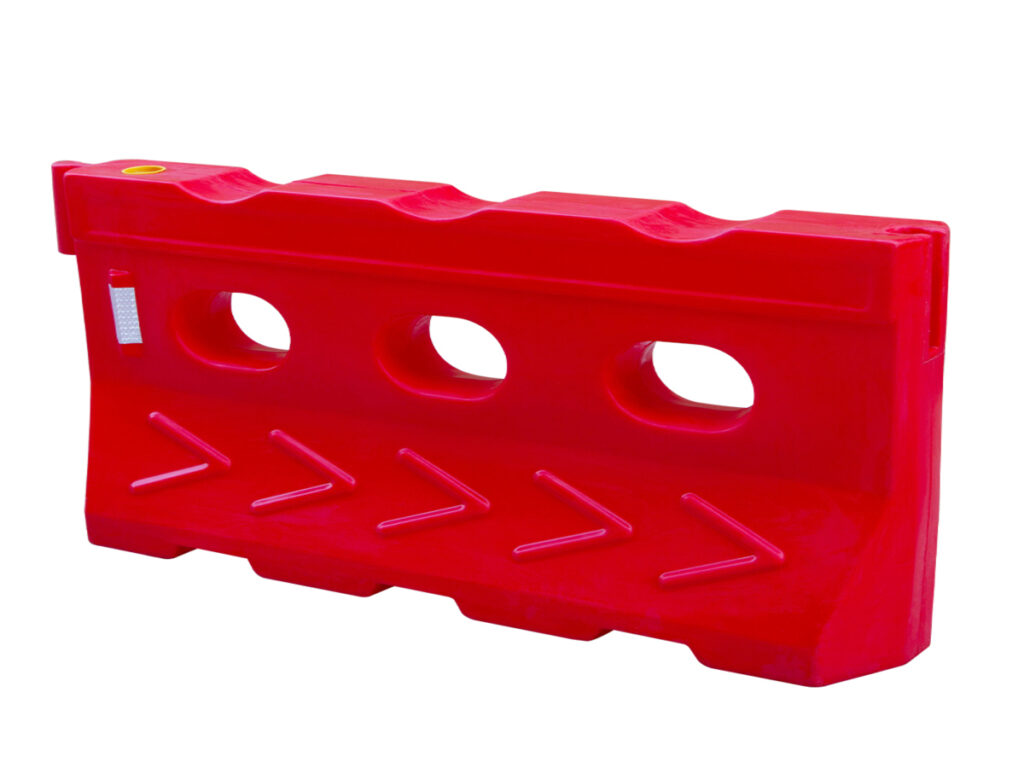
정의
물로 채워진 장벽은 도로와 작업장에서 사람들의 안전을 유지하는 데 도움이 됩니다.. 교통을 통제하고 작업자를 보호하는 데 사용됩니다.. 이 장벽에는 처음에는 비어 있는 플라스틱 껍질이 있습니다.. 작업자가 현장에 도착하면 물을 채웁니다.. 내부에 물이 없을 때, 그들은 가볍고 휴대하기 쉽습니다. 물을 채웠을 때, 무거워지고 움직이기 어려워진다. 이는 차를 멈추거나 사람들에게 어디로 가야 하는지 알려주는 데 유용합니다..
주요 기능
물이 채워진 장벽은 특별한 디자인과 유용한 기능으로 인해 다른 장벽과 다릅니다..
- 비어 있으면 가볍다, 그래서 이동과 설치가 쉽습니다..
- 물을 채웠을 때, 제자리에 머물며 쉽게 넘어지지 않습니다..
- 쉽게 부러지지 않고 악천후에도 견딜 수 있는 강력한 HDPE 플라스틱으로 만들어졌습니다..
- 밝은 색상과 반짝이는 스트립은 사람들이 쉽게 볼 수 있도록 도와줍니다., 어두워도.
- 다양한 장소에 맞게 함께 연결할 수 있습니다..
- 단기 또는 중간 규모의 작업에 적합합니다., 자동차를 분리하거나 행사에서 군중을 돕는 것과 같은.
- 그들은 올리고 내리는 것이 빠릅니다., 그래서 큰 기계가 필요하지 않습니다.
- 필요한 경우 다시 사용하고 이동 위치를 변경할 수 있습니다..
팁: 물로 채워진 장벽을 비우고 새로운 장소로 이동할 수 있습니다.. 변화가 많은 직업에 적합합니다..
재료
대부분의 물로 채워진 장벽은 다음과 같이 만들어집니다. HDPE 플라스틱. 이 플라스틱은 매우 강해서 쉽게 부러지지 않습니다.. 그것은 태양에 견딜 수 있습니다, 비, 손상되지 않고 바람과. 일부 교통 장벽은 다른 재료를 사용합니다., 유리섬유와 플라스틱이 섞인 것처럼, 튼튼하지만 너무 무겁지 않게 만들기 위해. 선택한 재료에 따라 장벽이 얼마나 잘 작동하는지가 달라집니다., 얼마나 오래 지속되는지, 그리고 이동이 얼마나 쉬운지. 장벽이 만들어지는 방식, 특수 금형을 사용하는 것처럼, 또한 모양과 비용도 변경됩니다.. HDPE 장벽은 강력하기 때문에 인기가 있습니다., 벤디, 그리고 오래 지속됩니다.
도로 장벽의 진화
전통적인 장벽
옛날, 도로 작업자들은 안전을 위해 무거운 장벽을 사용했습니다. 그들은 작업장에서 자동차를 멀리하기 위해 콘크리트와 강철을 사용했습니다.. 이러한 강력한 장벽은 사람들을 안전하게 지켜주었지만 문제를 일으켰습니다.. 콘크리트 장벽을 이동하려면 특수 기계가 필요했습니다.. 설정하는데 시간이 많이 걸렸어요. 계획이 변경되면 작업자는 신속하게 이동하기가 어렵다는 것을 알았습니다..
1990년대, 노동자들은 속이 빈 플라스틱 장벽을 사용하기 시작했습니다. 콘크리트보다 가벼웠어요. 사람들이 손으로 들고 다닐 수도 있었을 텐데. 하지만 가벼웠기 때문에, 때리면 가끔 움직였어. 안에 물이 있어도, 그들은 항상 안전 테스트를 통과하지 못했습니다. 엔지니어들은 내부에 강철을 넣어 더 강하게 만들려고 시도했습니다.. 이로 인해 새로운 문제가 발생했습니다.. 강철로 된 장벽은 충돌 시 너무 많이 움직일 수 있습니다.. 또한 장벽과 작업 영역 사이에 더 많은 공간이 필요했습니다.. 많은 사이트에는 이 추가 공간을 위한 충분한 공간이 없었습니다..
메모: 오래된 장벽으로 인해 작업자는 안전해졌지만 도로 작업이 느려지고 변경하기가 어려워졌습니다..
물로 가득 찬 장벽의 상승
물로 채워진 장벽으로 도로 공사가 더 안전하고 쉬워졌습니다.. 디자이너들은 강력한 장벽을 원했습니다., 유연한, 그리고 사용하기 쉬운. 그들은 플라스틱 껍질을 더 좋게 만들고 충분한 물을 담을 수 있는지 확인했습니다.. 이 새로운 장벽은 도로 공사에 대한 엄격한 안전 규칙을 통과했습니다.. 작업자는 기계 없이 빈 장벽을 이동할 수 있습니다.. 물을 채우면 차가 멈출 만큼 무거워진다..
물로 채워진 장벽은 단순히 사람들을 안전하게 지키는 것 이상의 역할을 했습니다.. 밝은 색상과 빛나는 스트립은 운전자와 작업자가 쉽게 알아볼 수 있도록 도와줍니다.. 팀은 다양한 모양과 크기로 장벽을 함께 결합할 수 있습니다.. 이는 다양한 장소에서 자동차와 사람을 모두 보호하는 데 도움이 되었습니다.. 오늘, 물로 채워진 장벽은 도로 공사에 매우 중요합니다.. 사이트를 안전하게 유지하고 작업 속도를 높이는 데 도움이 됩니다..
물이 채워진 장벽: 응용
물이 채워진 장벽은 오늘날 여러 곳에서 사용됩니다.. 다양한 요구 사항을 충족할 수 있는 디자인. 이러한 장벽은 교통에 도움이 됩니다., 건축 현장, 큰 행사, 그리고 비상 사태. 이를 사용하면 사람과 재산을 더욱 안전하게 보호할 수 있습니다..
교통 관리
교통 관리에는 도로를 안전하게 유지하기 위한 좋은 방법이 필요합니다.. 이를 위해서는 물로 채워진 장벽이 중요합니다.. 작업 구역을 통해 차량을 안내하고 도로가 폐쇄된 위치를 표시하는 데 도움을 줍니다.. 사고현장도 보호해준다. 그들의 밝은 색상과 반짝이는 부분은 쉽게 볼 수있게합니다.. 이는 혼잡하거나 위험한 장소에서 운전자가 이를 인지하는 데 도움이 됩니다..
- 물이 채워진 장벽은 채워지면 제자리에 유지됩니다., 강한 바람이나 교통 정체 속에서도.
- 팀은 다양한 트래픽 요구 사항에 따라 다양한 형태로 함께 참여할 수 있습니다..
- 그들은 올리고 내리는 것이 빠릅니다., 그래서 단기적인 도로 변경에 잘 작동합니다..
도시에서는 작업 공간을 안전하게 유지하고 교통 흐름을 유지하기 위해 이러한 장벽을 사용합니다.. 차가 그들을 때리면, 그들은 힘의 일부를 흡수합니다. 이는 단단한 장벽보다 사람들이 다칠 가능성이 적다는 것을 의미합니다.. 또한 기존 장벽보다 이동 및 설치가 더 쉽습니다., 지금은 정말 많은 사람들이 선택하고 있어요.
건설 현장
건설 현장은 근로자와 운전자에게 위험할 수 있습니다.. 물로 채워진 장벽은 작업 공간을 교통으로부터 분리하는 데 도움이 됩니다.. 건물 구역 주변에서 차량을 안전하게 안내합니다.. 팀은 원하는 곳에 빈 장벽을 놓을 수 있습니다., 그들을 연결하다, 그리고 물이나 모래를 채워서 안정되게 만듭니다..
- 밝은 색상과 반짝이는 스트립으로 운전자에게 위험을 경고합니다..
- 빠른 설치 및 제거로 시간과 비용 절약.
- 히트를 흡수합니다., 충돌이 발생하는 경우 사람들을 안전하게 보호하는 데 도움이 됩니다..
- 다시 사용할 수 있습니다., 환경에 더 좋습니다.
도로 작업은 현장 변경에 따라 이동하기 쉽기 때문에 이러한 장벽을 사용합니다.. 별로 관리가 필요하지 않고 오래 지속됩니다., 그래서 그들은 돈을 절약합니다. 특별한 요구 사항과 규칙에 맞게 표지판이나 로고를 추가할 수 있습니다..
행사 및 보행자 안전
콘서트나 경주와 같은 대규모 행사에는 적절한 군중 통제가 필요합니다.. 물로 채워진 장벽은 운전자가 볼 수 있는 강력한 경계선을 만듭니다.. 이는 사람들이 걷는 곳으로 자동차가 들어가는 것을 막고 모두를 더 안전하게 지켜줍니다..
- 장벽은 사람들을 안내하고 안전하지 않은 장소로 이동하는 것을 막는 데 도움이 됩니다..
- 그들의 밝은 모습은 운전자의 속도를 늦추고 보행자를 안전하게 지켜줍니다..
- 짧은 행사를 위해 이동 및 설치가 쉽습니다..
이벤트 팀은 이러한 장벽을 사용하여 질서를 유지하고 특별한 구역을 표시합니다.. 에이 2021 보고서에 따르면 물로 채워진 장벽을 사용하면 최대 30%. 모양을 빠르게 변경할 수 있습니다., 바쁜 행사에 적합하고 모두를 안전하게 지켜줍니다..
비상 및 군사용
응급 상황 및 군사 업무에는 빠른 안전 설정이 필요한 경우가 많습니다.. 물로 채워진 장벽은 충돌 현장이나 폐쇄된 도로에서 안전한 경계를 만드는 데 좋습니다.. 비어있을 때, 그들은 가볍고 움직이기 쉽습니다.
- 비상팀은 이를 사용하여 안전한 지역을 만들고 사람들을 보호합니다..
- 군사 단체는 위험한 장소에서 추가적인 안전을 위해 이를 사용합니다..
- 다양한 요구에 맞게 다양한 방법으로 참여할 수 있습니다..
이러한 교통 장벽은 긴급 상황 시 빠른 도로 차단 및 교통 통제에 좋습니다.. 안정적으로 유지되어 쉽게 볼 수 있습니다., 상황이 어려울 때에도. 물로 채워진 장벽은 사람들을 안전하게 보호하고 작업을 원활하게 진행하는 데 도움이 됩니다..
물로 채워진 장벽의 이점
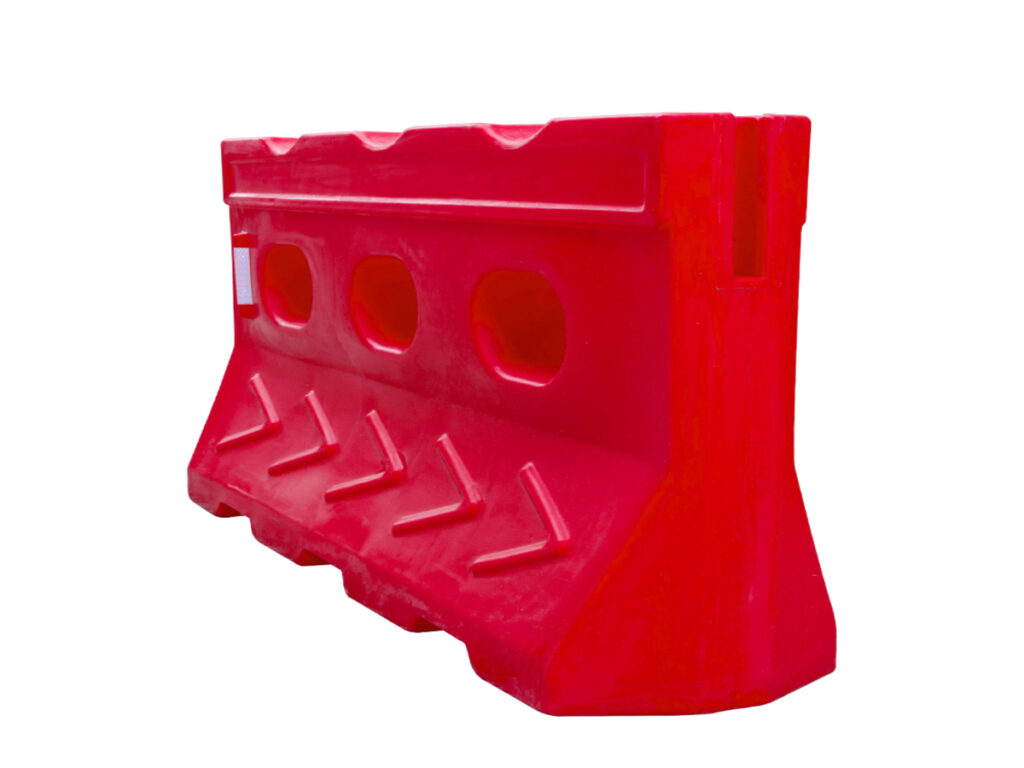
안전 및 충격 흡수
물로 채워진 장벽은 도로 공사 및 작업 현장에서 사람들을 안전하게 보호하는 데 도움이 됩니다.. 충돌로 인한 힘을 흡수하도록 만들어졌습니다.. 이렇게 하면 누군가가 다칠 가능성이 낮아집니다.. 일부 유형, 요독 장벽처럼, 특수 에너지 분배 셀 사용. 이것들은 강한 폴리에틸렌으로 만들어졌습니다.. 이 장벽은 엄격한 충돌 테스트를 통과했습니다.. 또한 연방고속도로국(Federal Highway Administration)이 정한 규칙을 충족합니다..
- 장벽은 충돌로 인한 힘을 분산시킵니다., 따라서 손상이 적습니다.
- 작업자와 운전자의 안전을 지켜드립니다.
- 작동도 잘되고 자격증도 있어서 많은 사람들이 신뢰하고 있어요.
물로 채워진 장벽은 모두를 위해 도로와 작업장을 더욱 안전하게 만듭니다.. 그들은 히트를 잘 받아들인다, 그래서 사람들은 도로 작업과 교통 통제를 위해 이 제품을 신뢰합니다..
가시성과 모듈성
물로 채워진 장벽은 밝고 반짝이는 띠가 있기 때문에 쉽게 볼 수 있습니다.. 이는 운전자와 보행자가 위험을 감지하는 데 도움이 됩니다., 악천후에도. 팀은 다양한 방법으로 함께 장벽에 합류할 수 있습니다..
팀은 새로운 요구 사항에 맞게 장벽의 모양을 빠르게 변경할 수 있습니다..
이것은 많은 직업에 유용하게 만듭니다, 자동차를 안내하거나 군중을 안전하게 지키는 것과 같은. 밝은 외관과 유연한 디자인은 팀이 안전을 계획하는 데 도움이 됩니다..
휴대성과 설치
물로 채워진 장벽은 비어 있을 때 가볍습니다., 따라서 노동자들은 쉽게 움직일 수 있습니다. 설치하는 데 큰 기계가 필요하지 않습니다.. 물을 채웠을 때, 그들은 제자리에 머물면서 사람들을 보호합니다.
- 그들은 올리고 내리는 것이 빠릅니다., 시간을 절약해주는 것.
- 다른 사이트에서 다시 사용하실 수 있습니다, 그래서 그들은 돈을 절약합니다.
이동이 쉽기 때문에, 팀은 상황을 빠르게 변화시키고 모두를 안전하게 지킬 수 있습니다..
비용 효율성
물로 채워진 장벽은 짧은 작업이나 상황이 자주 바뀔 때 현명한 선택입니다.. 아래 표는 콘크리트 장벽과 어떻게 비교되는지 보여줍니다.:
| 배리어 유형 | 선불 비용 | 유지 & 내구성 | 수명 비용 고려 사항 |
|---|---|---|---|
| 물이 가득한 장벽 | 일반적으로 처음에는 비용이 적게 듭니다. | 손상되거나 누출될 수 있음; 더 많은 보살핌이 필요해 | 다시 사용할 수 있습니다.; 짧은 일에 적합; 더 가볍고 이동 및 보관이 용이함 |
| 콘크리트 장벽 | 처음에는 비용이 더 많이 듭니다. | 더 오래 지속되고 관리가 덜 필요함 | 처음에는 비용이 더 많이 들더라도 장기간 작업에 더 좋습니다.; 무겁고 이동하려면 특수 기계가 필요함 |
물로 채워진 장벽은 이동 및 설치 비용이 저렴합니다.. 이로 인해 많은 도로 작업 팀이 좋은 선택을 합니다..
환경 영향
물로 채워진 장벽은 다시 사용할 수 있고 무겁지 않기 때문에 환경에 더 좋습니다.. 새로운 재료, 나노셀룰로오스 필름처럼, 미래에는 장벽을 더욱 친환경적으로 만들 수도 있습니다.. 이 신소재는 강하고 재활용이 가능하며 자연적으로 분해될 수 있습니다.. 연구에 따르면 장벽을 더 가볍게 만드는 것은 단순히 재활용 가능하게 만드는 것 이상으로 환경에 도움이 되는 것으로 나타났습니다..
물로 채워진 장벽은 다시 사용할 수 있고 이동하는 데 더 적은 에너지가 필요하기 때문에 이미 지구에 도움이 됩니다..
물로 채워진 장벽을 선택하면 팀이 환경을 보호하고 사람들을 안전하게 지키는 데 도움이 됩니다..
물로 채워진 장벽과 다른 장벽
콘크리트 장벽
콘크리트 장벽은 오랫동안 사용되어 왔습니다.. 그들은 강하고 큰 차량을 멈출 수 있습니다. 이 장벽은 부딪혀도 많이 움직이지 않습니다.. 하지만 충돌로 인한 힘을 흡수하지는 않습니다.. 이는 운전자와 걷는 사람이 더 많이 다칠 수 있음을 의미합니다.. 콘크리트 장벽은 매우 무거우므로 이동하려면 특수 기계가 필요합니다.. 팀을 배치하려면 더 많은 인력과 시간이 필요합니다.. 시간이 지남에 따라, 콘크리트는 부서지고 수리 비용이 더 많이 들 수 있습니다..
| 측면 | 물이 채워진 장벽 | 콘크리트 장벽 |
|---|---|---|
| 안전 | 충격을 더 잘 흡수, 부상자와 사망자 감소; 높은 가시성; 더욱 안전한 충돌 쿠션 | 최소 편향; 근로자를 위한 견고한 보호; 대형 차량은 정지할 수 있지만 충격 흡수력은 떨어집니다. |
| 비용 | 비용 효율적; 선불로, 시간이 지나면서 더 저렴해집니다.; 운송 및 인건비 절감 | 더 높은 설치 비용; 중장비와 노동시간이 필요함; 시간이 지남에 따라 저하 |
| 배포 용이성 | 비었을 때 가벼움; 가지고 다닐 수 있는; 설치하기 쉽습니다, 제거하다, 그리고 저장; 모듈식 및 사용자 정의 가능 | 무겁고 움직이지 않음; 저장하기 어렵다; 맞춤설정할 수 없음; 배포 속도가 느림 |
메모: 물로 채워진 장벽은 이동 및 설치 비용이 더 저렴합니다.. 팀은 현장에서 물을 채웁니다., 그래서 빨리 사용할 수 있어요.
금속 장벽
금속 장벽은 매우 강력하고 뻣뻣합니다.. 더 위험한 곳에 사용됩니다.. 이러한 장벽은 충돌이 발생하면 자동차를 밀어냅니다.. 하지만 그들은 충돌 에너지를 흡수하지 않습니다. 금속 장벽에 부딪히면 자동차가 심하게 손상되고 운전자가 다칠 수 있습니다.. 금속 장벽은 무겁고 이동하기 어렵습니다.. 팀은 현재 위치를 변경하는 데 어려움을 겪습니다.. 오랫동안 머무르는 곳에서 가장 잘 작동합니다..
- 물로 채워진 장벽은 충돌 에너지를 흡수하고 사람들을 더 안전하게 유지합니다..
- 변하지 않는 장소에는 금속 장벽이 좋습니다., 하지만 충돌사고가 나면 더 위험해요.
- 물로 채워진 장벽은 이동 및 변경이 쉽습니다., 그래서 짧은 일이나 행사에 좋습니다..
강점과 한계
각 장벽 유형에는 고유한 장점이 있습니다.. 물이 채워진 장벽은 쉽게 볼 수 있습니다., 히트곡을 흡수하다, 사용이 간편하고. 팀은 도로 작업을 위해 신속하게 준비할 수 있습니다., 이벤트, 또는 건물 사이트. 콘크리트와 금속 장벽은 견고하여 오랫동안 안전을 유지해야 하는 장소에 적합합니다.. 하지만 이동이 어렵고 운전자에게 더 위험할 수 있습니다..
팁: 물로 채워진 장벽은 작업 변경에 유연하고 안전합니다.. 콘크리트 및 금속 장벽은 강한 장벽에 가장 적합합니다., 오래 지속되는 안전성.
물로 채워진 장벽에 대한 모범 사례
선택 및 준수
올바른 물로 채워진 장벽을 선택한다는 것은 현장에 필요한 것이 무엇인지 아는 것을 의미합니다.. 팀은 얼마나 큰지 확인해야합니다, 무거운, 장벽이 강하고. 장벽은 다음과 같은 영국 안전 규칙을 따라야 합니다. BS ONE 1317. 팀은 명확한 인증서가 표시된 제품을 선택해야 합니다.. 지역 의회 규칙을 확인하면 문제를 방지하는 데 도움이 됩니다.. 임대 장벽은 단기 일자리나 이벤트에 적합합니다.. 자주 사용하거나 오랫동안 사용하면 구매하는 것이 좋습니다. 팀은 선택하기 전에 비용과 장벽을 저장할 위치를 살펴봐야 합니다..
팁: 장벽이 영국 규칙을 준수하는지 확인하기 위해 항상 명확한 인증 표시를 찾으십시오..
설치 가이드
장벽을 올바른 방법으로 설치하면 안전하고 안정적으로 유지됩니다.. 팀은 다음 단계를 수행해야 합니다.:
- 원하는 곳에 빈 장벽을 놓으십시오..
- 장벽에 있는 링크나 패스너로 장벽을 연결하세요..
- 각 장벽을 올바른 수준까지 물로 채우십시오..
- 누출이나 느슨한 부품이 있는지 확인하십시오..
- 필요한 경우 반짝이는 스트립이나 표지판을 추가하세요..
작업자는 장벽을 설치할 때 안전 장비를 착용해야 합니다.. 팀은 채운 후 장벽이 안정적인지 확인해야 합니다.. 올바른 설정으로 인해 사이트가 더욱 안전해지고 보안이 강화됩니다..
유지 관리 및 보관
장벽을 잘 관리하면 장벽이 더 오래 지속되는 데 도움이 됩니다.. 팀은 다음을 수행해야 합니다.:
- 먼지를 제거하기 위해 순한 비누와 물로 장벽을 씻으십시오..
- 장벽에 균열이 있는지 확인하세요., 누출, 아니면 약한 곳.
- 느슨한 부품이나 패스너를 조이세요..
- 강한 햇빛과 매우 뜨거운 장소를 피하십시오..
- 장벽을 건조한 곳에 보관하십시오., 손상을 막기 위한 시원한 지점.
| 요소 | 재료 | 유지 관리 및 보관 관행 | 예상 수명 |
|---|---|---|---|
| 터미널 & 접합 | 알류미늄 | 조심해서 잘 보관하세요 | 10–20 년 |
| 스트랩 | 스테인레스 스틸, 알류미늄 | 올바른 방법으로 사용하고 관리하세요 | 10–20 년 |
| 튜브 | PP와 PE | 어두운 곳에 보관하세요, 건조한 곳; 자주 청소하고 확인하세요 | 5-10년 |
정기적인 관리를 통해 장벽을 강화하고 모든 작업에 대비할 수 있습니다..
미래의 트렌드
디자인의 혁신
최근 물이 채워진 장벽이 많이 바뀌었습니다.. 디자이너들은 더 오래 지속되는 더 강한 소재를 사용합니다.. 악천후에도 견딜 수 있는 소재. 밝은 색상은 운전자와 작업자가 멀리 있는 장애물을 볼 수 있도록 도와줍니다.. 이를 통해 도로와 작업장이 더욱 안전해집니다.. 모듈식 설계를 통해 팀은 다양한 방법으로 장벽에 합류할 수 있습니다.. 이는 모든 종류의 프로젝트에 적합하도록 도와줍니다..
최근 개선 사항은 다음과 같습니다.:
- 강화된 강도와 유연성을 위해 고급 폴리머로 제작된 장벽.
- 빠른 설치 및 제거를 위해 쉽게 연결되는 부품.
- 설치 시간을 절약해 주는 기성품.
- 작업 시작 전에 팀이 장벽 레이아웃을 계획하고 확인하는 데 도움이 되는 디지털 도구.
이러한 변화로 인해 장벽이 더욱 안정적이고 사용이 간편해졌습니다.. 또한 팀이 작업을 더 빨리 완료하고 모두를 더 안전하게 보호하는 데 도움이 됩니다..
스마트 장벽 및 IoT
이제 기술은 안전에 매우 중요합니다.. 스마트 물이 채워진 장벽은 센서와 무선 시스템을 사용하여 문제를 찾아냅니다.. 이러한 장벽은 움직이거나 손상되면 경고를 보낼 수 있습니다.. 팀은 모바일 장치를 사용하여 멀리서도 장벽을 확인할 수 있습니다..
일부 스마트 장벽은 광섬유 센서를 사용하여 압력이나 움직임 변화를 감지합니다.. 이는 팀이 문제가 악화되기 전에 문제를 해결하는 데 도움이 됩니다.. 자동화된 안내 시스템은 장벽을 항상 올바른 위치에 배치하는 데 도움이 될 수 있습니다..
스마트 장벽은 팀이 더 적은 작업과 더 많은 제어로 현장을 안전하게 유지할 수 있도록 도와줍니다..
지속 가능성
지속가능성은 그 어느 때보다 중요합니다. 제조업체는 이제 폴리스티렌 및 폴리에틸렌 테레프탈레이트와 같은 재활용 플라스틱을 사용하여 장벽을 만듭니다.. 일부 장벽은 오래된 타이어의 고무나 식물의 셀룰로오스를 사용합니다.. 이러한 선택은 폐기물을 줄이고 지구를 보호하는 데 도움이 됩니다..
장벽이 오래되었을 때, 청소하고 다시 사용할 수 있습니다. 일부 새로운 장벽은 특수 화학 물질을 사용하므로 힘을 잃지 않고 여러 번 부수고 재건할 수 있습니다.. 이러한 폐쇄 루프 재활용은 폐기물을 줄이고 재사용을 늘리는 것을 의미합니다..
| 사용 된 자료 | 원천 | 혜택 |
|---|---|---|
| 재활용 폴리머 | 플라스틱 병, 타이어 | 매립 폐기물 감소 |
| 셀룰로오스 유도체 | 식물 | 생분해성 및 재생 가능 |
| 폐쇄 루프 멤브레인 | 고급화학 | 여러 번 재활용 가능 |
이러한 단계는 물로 채워진 장벽이 더 깨끗하고 친환경적인 미래를 지원하는 데 도움이 됩니다..
물로 채워진 장벽은 우수한 안전성을 제공하며 다양한 방법으로 사용될 수 있습니다.. 팀에서는 신속하게 배치하고 필요할 때 이동할 수 있습니다.. 이러한 장벽은 작업자와 사람들의 안전을 유지하는 데 도움이 됩니다.. 올바른 단계를 사용하면 각 장벽이 제대로 작동하고 모든 규칙을 준수하는지 확인할 수 있습니다..
귀하의 필요에 맞는 올바른 교통 바리케이드 선택에 대한 자세한 내용은, 블로그를 확인하십시오, 판매용 트래픽 바리케이드에 대해 알아야 할 모든 것.
FAQ
물로 채워진 장벽의 주요 목적은 무엇입니까?
물로 채워진 장벽은 사람들의 안전을 지켜줍니다.. 그들은 트래픽을 안내합니다, 노동자를 보호하십시오, 위험한 지역을 표시하고. 팀은 도로에서 사용합니다., 이벤트에서, 그리고 건축현장에서.
물이 채워진 장벽을 어떻게 설치합니까??
- 필요한 곳에 빈 장벽을 놓으십시오..
- 필요한 경우 다른 장벽에 연결하십시오..
- 가득 찰 때까지 물을 채워주세요.
- 누출이 있는지 확인하고 단단히 고정되어 있는지 확인하십시오..
팁: 최상의 결과를 얻으려면 항상 제조업체의 지침을 따르십시오..
물로 채워진 장벽을 재사용할 수 있습니까??
예, 팀은 이러한 장벽을 비우고 새로운 위치로 이동할 수 있습니다.. 적절하게 관리하면 여러 용도로 사용할 수 있습니다.. 정기적인 점검으로 좋은 상태를 유지하는 데 도움이 됩니다..
모든 기상 조건에 적합한 물로 채워진 장벽?
물이 채워진 장벽은 비가 올 때에도 잘 작동합니다., 바람, 그리고 태양. 튼튼한 플라스틱 껍질은 날씨로 인한 손상을 방지합니다.. 팀은 폭풍 발생 후 안전을 보장하기 위해 장벽을 확인해야 합니다..

